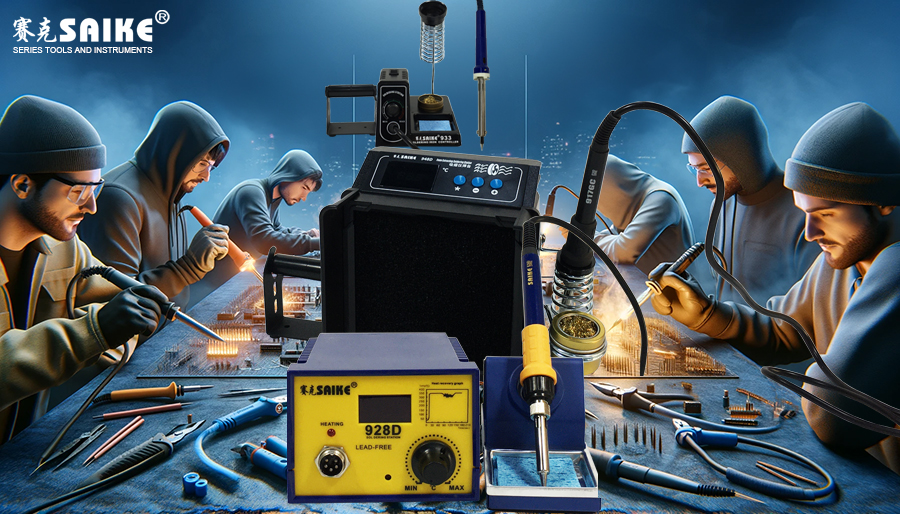
SK-YJ000DLT-KP 100009
The electric soldering iron is a crucial tool in the field of electronic production and maintenance, and its performance parameters directly affect the effectiveness and efficiency of use. This article will introduce the main performance parameters of electric soldering irons in detail and compare different types of soldering irons to help readers better understand and choose a soldering iron suitable for their needs.
I. Main Performance Parameters of Electric Soldering Irons
1.Power: The power of electric soldering irons usually ranges from 15W to 60W. The higher the power, the faster the heating speed and the higher the soldering efficiency. However, excessive power may also lead to excessively high temperatures of the soldering iron tip, increasing soldering difficulty and risk. Therefore, when choosing an electric soldering iron, it is essential to select the appropriate power based on actual needs.
2.Temperature Range: The temperature range of electric soldering irons is usually between 200℃-480℃. Different soldering jobs require different temperatures. For example, ordinary circuit board soldering generally requires a temperature of 250℃-300℃, while soldering microelectronic components may require a lower temperature. Therefore, the soldering iron should have a wide temperature adjustment range to adapt to different soldering needs.
3.Heating Speed: Heating speed is one of the essential indicators to measure the performance of electric soldering irons. Rapid heating can shorten the waiting time and improve work efficiency. Generally, the heating speed of internal-heated soldering irons is faster, while the heating speed of external-heated soldering irons is relatively slower due to their larger soldering iron tips.
4.Temperature Stability: Temperature stability is crucial for soldering quality. The constant temperature soldering iron can keep the soldering iron tip temperature stable for a long time, thereby improving soldering quality and consistency.
5.Service Life: The service life of an electric soldering iron is closely related to its quality and design. External-heated soldering irons usually have a longer lifespan and are less prone to overheating, while internal-heated soldering irons have a relatively shorter lifespan despite their fast preheating speed.
II. Comparison of Different Types of Electric Soldering Irons
1.Internal-heated and External-heated Electric Soldering Irons:
– Internal-heated Electric Soldering Irons: Fast preheating speed, small size, and easy to carry. Suitable for small-scale soldering work such as home maintenance and DIY production. However, the service life is relatively short, and high power may lead to excessively high temperatures of the soldering iron tip.
– External-heated Electric Soldering Irons: Long service life and resistance to overheating. Suitable for large-scale, high-intensity soldering work such as professional electronic production and maintenance. However, the preheating speed is slower, and the size is larger, making it inconvenient to carry.
2.Constant Temperature and Non-constant Temperature Electric Soldering Irons:
– Constant Temperature Electric Soldering Irons: Able to maintain a stable soldering iron tip temperature for a long time, improving soldering quality and consistency. Suitable for precise soldering work that requires high temperatures. However, the price is relatively high.
– Non-constant Temperature Electric Soldering Irons: Relatively cheap and suitable for soldering work that does not require high temperatures. However, it requires operators to have certain soldering skills and experience to control the temperature of the soldering iron tip.
III. Summary
In summary, different types of electric soldering irons have their advantages and disadvantages, and the choice should be weighed based on actual needs and usage scenarios. When purchasing an electric soldering iron, it is recommended to consider factors such as brand, cost-effectiveness, and after-sales service to ensure the purchase of a high-quality product suitable for personal use.


